Ryan Hall's Blog, page 145
July 31, 2017
Why The Rocky Mountain Slam Is The Toughest Race Series In Ultrarunning
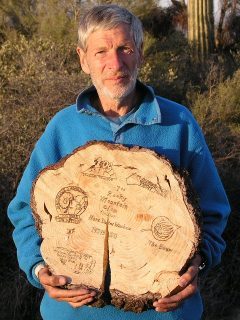
Hans-Dieter Weisshaar, a 63-year-old from Germany, is a six-time slammer, the most ever. Photo: Courtesy of Rocky Moutain Slam
Almost every year, Leland Barker creates trophies for runners who complete the Rocky Mountain Slam, an annual test of endurance, fitness, perseverance, altitude and logistics.
To claim one of Barker’s trophies, a big hunk of chainsaw-cut wood burned with the athlete’s name, date and races, runners must complete four out of five designated 100-mile trail races over a 3½-month span. Since the first completed slam in 1999, it has been accomplished just 59 times by 30 runners. Some years, as many as eight runners have earned the prize. However in other years, it’s been zero.
“It’s definitely a feeling of accomplishment,” says Andrew Barney, 44, of American Fork, Utah, who’s done it four times. “I know a lot of runners who say they only run one 100 a year, and that’s big enough for them.”
The only runner who hasn’t collected the big wooden trophy is Barker himself. He completed the Slam in 2003 but never gave himself the award.
“I meant to,” he says, laughing. “I had a piece of wood saved to make an award for me and I never got around to making it.”
That’s just fine with him, though. The 59-year-old resident of Smithfield, Utah, has gotten all he’s wanted out of the Slam—and more.
Barker is the race director of the annual Bear 100 Mile Endurance Run. The race, which crosses the Utah-Idaho border, was founded in 1999. Barker wanted a way to attract more runners to his race. He’s not certain of the date, or who actually came up with the idea, but says the Slam sprouted from a discussion between himself, Roch Horton, Hans-Dieter Weisshaar and Errol Jones. The idea was inspired by the Grand Slam of Ultrarunning, which has been around since the 1980s and challenges runners to complete the nation’s four oldest and most prestigious 100-milers in a calendar year.
To complete the Rocky Mountain Slam, men and women have to finish four out of five annual races in the Rockies: the Bighorn 100 in Montana in June, the Hardrock 100 in Colorado in July, the Leadville Trail 100 in Colorado in August, the Wasatch Front 100 in Utah in early September and the Bear 100 in late September. Leadville and Wasatch are also part of the Grand Slam of Ultrarunning.
RELATED: Why Leadville’s Cutoff Queen Has The Toughest Job In The Sport
“We wanted the Bear to be the final race,” says Barker.
It’s an informal fellowship. Runners don’t have to register, notify anyone of their intentions or pay any special fees. The only requirements are to finish the two mandatory races—Hardrock and Bear—along with two of the other three. Then, Barker recognizes those runners at the awards ceremony. They earn Barker’s wood trophy and, sometimes, a T-shirt.
It’s so informal that the first runner to complete the Rocky Slam in 1999 was grandfathered in. James Ballard of Montana ran the Hardrock, Leadville, Wasatch and Bear races the year before Barker and his buddies had even come up with the idea.
Nobody earned the Slam in 2000. Betsy Kalmeyer of Colorado was the lone qualifier in 2001. In 2002, no one earned the trophy. Then, in 2003, Barker was one of five slammers, a group that included Weisshaar, a 63-year-old from Germany who would go on to be a six-time slammer, the most ever.
“He was amazing,” says Barker. “He was doing it when he was my age. I’m no longer doing 100-mile races. Actually, he was older than me when I started doing it. He didn’t go real fast, he was one of the last finishers usually. But he really enjoyed doing 100-mile races. He’d come to the United States and do one every weekend all summer long.”
Most judge Hardrock as the toughest race of a difficult bunch. “It’s an amazing amount of climb and descent,” says Barker.
In fact, it’s more than 66,000 feet of elevation change at an average elevation of 11,000 feet. Each race has its challenges. Leadville is run at high altitude, with a 30-hour time limit. The Wasatch (“100 miles of heaven and hell,” is its slogan) has big climbs and descents, as do the Bear and Bighorn. To Barney, the five races all share Rocky Mountain character of steep terrain, unpredictable weather, high altitude and beautiful scenery. He says there’s a “ruggedness” of rocky trails.
“It’s a lot of steep climbing,” says Barney. “And all kinds of weather conditions. Even in summer, you can have snow. I’ve dealt with all kinds of conditions, from heat to downpours to blizzards.”
Barney completed his first Slam in 2009 and his fourth in 2016. In a perfect scenario, he would probably do four of the Rocky 100 races every year. However, he could not get into the Hardrock race this year. But he did run Bighorn and will be doing Wasatch and the Bear.
That’s one of the logistical challenges making the Rocky Mountain Slam more difficult. As the number of ultrarunners surges, races become more impacted and many adopt lotteries. Hardrock, Leadville and Wasatch now have lotteries. Bear and Bighorn fill up quickly, so it’s important to register early.
Barney acknowledges that doing four 100-milers in a summer is physically challenging, especially in years when the Wasatch and the Bear are within a couple of weeks of one another.
But, like other ultrarunners, he loves the mountains, trail running and being with friends. He enjoys pursuing the Slam and the feeling of accomplishment. He admits getting “a sort of empty feeling” when he can’t get into a race like Hardrock. Plus, there’s a spiritual pull to running 100 miles through the wilderness.
“At Hardrock, in the middle of the night, I had a chance to just lay down and turn my light off and look at the stars at 13,000 feet,” he says. “You don’t get to do that very often. Just enjoying being out there and the moment, seeing sunrises and sunsets and sunrises again in the course of one race, it’s something…It let’s me think about my place in the world and the universe and where I fit in.”
RELATED: Ultrarunner Kilian Jornet On Peaking At The Right Time
The post Why The Rocky Mountain Slam Is The Toughest Race Series In Ultrarunning appeared first on Competitor.com.
Why Are Specialty Running Stores So Special?

What makes specialty running stores so special? I sought out the advice of Charlotte and Dave, two shop owners, to find out. One of the first questions I asked was, “What is the drive to running a store when it’s so tough to stay in business?” Their answers were unanimous: passion, which is something that runners know quite a lot about. Both Charlotte and Dave are runners and have knowledge of shoes and running attire that you probably won’t find at the big chain sporting goods stores.
Here are several things that set the small specialty stores apart from the big boys:
Aside from buying your shoes from actual runners, you get the benefit of being properly fitted in a shoe suited for your running style. There are also brands of shoes at specialty running stores that you won’t find in the bigger stores.
Running specialty stores face stiff competition from both Internet sales and bigger stores. Hence, they rely on excellent customer service and word-of-mouth advertising.
These stores are also a valuable resource for race information in your area. Many of them carry brochures for coaching, personal training, chiropractors and therapeutic massage.
The chain megastore might offer three or four brands with a few models for each brand. I get weak in the knees when I see eight different brands and six or seven models per brand at specialty running stores.
Runners love “stuff” like watches, sunglasses, compression socks, arm bands, hats, and all kinds of attire for any season, which are readily available at these shops.
Small running stores are active in their communities, offering race sponsorships and hosting fun runs. These fun runs are often attended by vendors who will actually let you wear attire or test drive the latest shoe. How great is running in a new pair of shoes while under no pressure to buy them?
I consider myself lucky to have spent time at specialty running stores like Marathon Sports and Charles River Running, both in Massachusetts. Do you have a favorite running store? Do they suit your needs, and do you send business their way? Have you participated in their fun runs? Check out your local store; they do a lot for the running community. Let’s do our part and support them.
RELATED: What You Need In Your Running To-Go Bag
The post Why Are Specialty Running Stores So Special? appeared first on Competitor.com.
NYC Marathon Is Giving Out 95 Free Entries To This Year’s Race
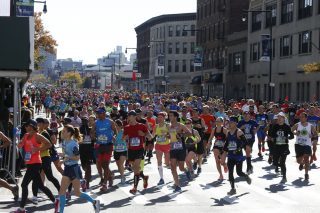
The official sponsor of the 2017 TCS New York City Marathon, Michelob ULTRA, announced today that it will grant 95 athletes the opportunity to compete in this year’s marathon free of charge. Participation for the NYC Marathon is very competitive: most runners needed to meet the race’s time qualifying requirements by Dec. 31, 2016 in order to race on Nov. 5. However, there’s still hope for athletes that didn’t qualify by the deadline. By submitting a personal story that explains why they deserve to toe the Staten Island starting line, runners will have a chance at one of those 95 bibs.
So what exactly does that personal story need to say? “We’re looking for people who embody the spirit of our brand–the pursuit of an active, balanced lifestyle and a desire to always go the extra mile,” Michelob ULTRA Vice President Azania Andrews said in an official statement. “Marathons bring out the best in people, and we want to help tell their inspiring stories.”
RELATED: Scenes From The 2016 New York City Marathon
When Michelob ULTRA announced the opportunity to join “Team ULTRA” this morning, the sponsor released a short video that gives examples of the kinds of stories the brand is looking for. One bib winner, Tracey McGee of New Jersey, will run the course this fall after completing a marathon with a broken hip last year. Another runner is dedicating his participation in the race to his recently deceased son.
To be considered for one of the remaining bibs, runners can visit this page on the Michelob ULTRA website, where they’ll be asked to share their story (answers are limited to 500 characters) and a few other details, such as the length of time they’ve been running and whether or not they’ve participated in the TCS NYC Marathon before. Interested athletes must be legal U.S. residents and at least 21 years old. The contest will accept applications until Aug. 10.
This story originally appeared on Womensrunning.com.
RELATED: 45 Reasons Why We Love The New York City Marathon
The post NYC Marathon Is Giving Out 95 Free Entries To This Year’s Race appeared first on Competitor.com.
How Running And Music Intersect For RAC’s Liz Anjos
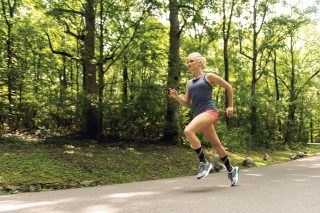
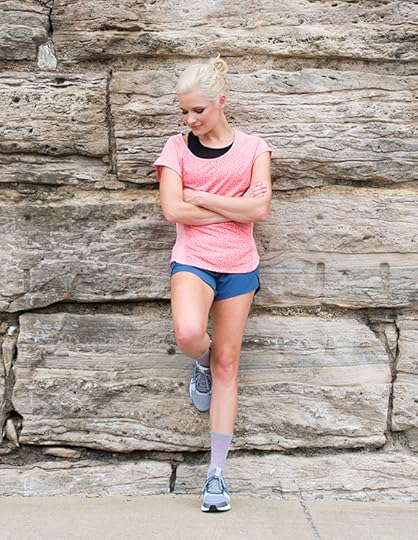
There are two sides to Liz Anjos when it comes to her passions and pursuits in life. The recording artist and songwriter from Portland, Ore., performs under the pop moniker Pink Feathers and moonlights as a keyboardist and vocalist with RAC, a popular electronic band fronted by her husband, André Anjos. She’s also a sub-3-hour marathoner who blogs about her running, dabbles in personal run coaching and is starting her own track club.
Although music and running appear to be separate interests, the two actually intersect for Anjos in many ways. She isn’t a musician who just happens to run occasionally, nor is she a runner who can simply play an instrument. She is 100 percent invested in both.
Finding Her Beat
“When I entered college, that’s when running and music almost collided for me,” recalls the 31-year-old, who had been on her high school track-and- fi eld team. “I was a piano major and I was a little worried on how timeconsuming that would be and about keeping up in school. So I ended up just not running at all.”
It wasn’t until her senior year of college that she missed running so much she asked the school’s coach if she could join the team. That was 2006. She hasn’t stopped running since and has gotten quite successful and serious about it—and her music.
Anjos ran her fastest marathon (2:59:22) at the 2014 Philadelphia Marathon only a week after being on tour with RAC. It’s hard to imagine when she fi nds the time to train between shows while being on the road every day, especially for a distance as demanding as the marathon. But Anjos doesn’t see it that way.
Fine-Tuning On Tour
“I have found that it is possible to train well on tour, and I have done it before,” she says. “Even though we’re traveling all over the country and we’re in a new city every day, our day-to-day is still pretty routine. Most venues operate very similarly—opening at noon to load in equipment with sound check usually around 3 to 5 p.m.—in that sense it’s predictable.”
While on tour, Anjos says she usually wakes up around 9 a.m. in whatever new city she’s in and goes for a run. When training for the Philadelphia Marathon, she’d squeeze in 60-mile training weeks and a couple of 20-plus milers. With her late-night shows that means going to bed past midnight, waking up, running, performing and then repeating it all over again each day.
“It’s almost like I’m on this constant adrenaline [rush], not even from just running, but playing shows every night,” Anjos explains. “It’s like I’m getting in a little extra cardio workout every night.
“I know as runners, we try to fi nd that edge in our training, but I feel like in the same way when I’m on tour, I’m finding that edge too.”
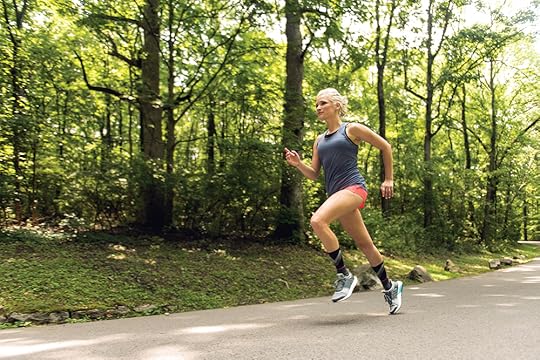
Stronger Sound
Anjos isn’t too worried about her training for the Nov. 5 New York City Marathon while also on tour in the weeks leading up to another major race. The North American tour with RAC is scheduled for shows throughout September and October along both coasts—and a few in Canada—to promote the July release of their new album, “Ego.”
However, she is taking more precautions and changing the way she trains ahead of New York City, due to her not-so-pleasant experience running the Chicago Marathon last year. In Chicago, Anjos’ entire right side started to throb with pain around mile 20. She had to stop at an aid station for some time before she could jog slowly to the finish. But the result left her with a minor knee injury and prevented her from running The North Face Endurance Challenge 50K in San Francisco a month later.
This time Anjos says she wants “to get really strong for New York” and that her “big focus this year is becoming a well-rounded athlete outside of running” to prevent another injury. So she’s started doing Pilates twice a week and has been incorporating more stability and strength work into her routine, including a core workout her fellow RAC band member Troupe Gammage put together and does a couple hours before every show.
Unlike Chicago, Anjos doesn’t have a time goal of beating her PR for New York. “I just want to get to that final 10K feeling like I have something left in the tank and feeling strong,” she says.
Encore Performances
Besides the New York City Marathon, the traveling musician has a few more running goals she’d like to accomplish.
“I’m training for New York City right now, but I think it would be fun to focus on some shorter and faster races in the beginning of 2018,” she says. “One race I’ve always wanted to do is the Carlsbad 5000. That one has been on my radar for a while.” She’s also considering the 5- or 10K next year at Rock ’n’ Roll New Orleans.
Being a musician, Anjos has always appreciated the Rock ’n’ Roll Marathon Series events too. Her initial Rock ’n’ Roll was in 2011 in Las Vegas, where she ran the first nighttime half marathon at that event. She remembers standing right next to the stage at the start line and watching Pearl Jam’s Mike McCready play the national anthem “Jimi Hendrix–style.” She says, “That just set the tone for the night and it was a really great and surreal experience.”
She then ran the inaugural Rock ’n’ Roll Portland Half Marathon in 2012. “Rock ’n’ Roll Portland went through a lot of very iconic Portland neighborhoods, and you really got to see Portland as a whole with that race,” she recalls of the race’s course.
Booking New Gigs
These days Anjos is excited about her recent appointment as the assistant coach for cross-country at Mountainside High School in Beaverton, Ore., and the track club she started in Portland called Rose City Track Club.
“There are a lot of competitive runners in Portland that aren’t necessarily running at the elite level but just want to get the best out of themselves,” says Anjos on why she started the club. “It’s been a dream project in the making for a little while now.”
Whether it’s releasing a new album, training for a major marathon between shows or starting a new running project, what’s obvious is how running and music motivate Anjos to be her best and most creative self.
She says, “I always feel better on days that I run than when I don’t.”
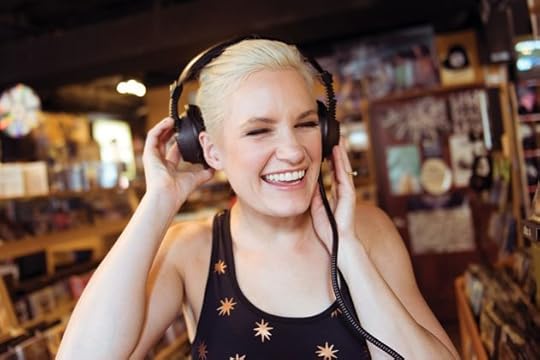
TUNE IN: Liz Anjos’ Power Mantra Playlist
Although Anjos says she doesn’t listen to music while she’s running, because it’s her time to feel unplugged, when she’s getting ready for a race, she’ll zero in on a specific song or lyric to get in her head. She uses the song as a motivator or mantra. Tune into her picks for the best song mantras on the run!
“Green Light” by Lorde
“Do It Again” by Röyksopp & Robyn
“Destroy Everything You Touch” by Ladytron
“Nobody ft. Chaos Chaos” by RAC
“Closer” by Tegan & Sara
“Welcome to New York” by Taylor Swift
“Radio War (Karl Kling Remix)” by Pink Feathers
“Now That You Got It” by Gwen Stefani
“Running Behind” by Holychild
“Don’t Panic” by Ellie Goulding
“Heads Will Roll” by Yeah Yeah Yeahs
“A-Yo” by Lady Gaga
The post How Running And Music Intersect For RAC’s Liz Anjos appeared first on Competitor.com.
ON Running To Sponsor Athlete Refugee Team At World Champs
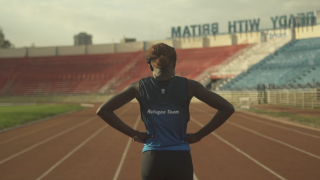
Ahead of the IAAF World Championships in London, On Running has announced that they will be sponsoring the Athlete Refugee Team (ART). These runners have fled their home countries because of civil war in South Sudan, Eritrea or Ethiopia and currently train in Kenya. Five members of the team will be competing at the World Championships, which take place August 4-13.
On is providing the team with shoes, running gear and financial assistance to enable them to train as pro athletes. In addition, the company has created the “We Are All One” campaign, centered around the mantra of the team. The mantra is meant to capture the hope and peace that running brings to these athletes.
“I thought I was supporting this team with running shoes, apparel and financial assistance. But in reality, they have supported me, they are supporting us all in understanding the world better,” On Running co-founder Olivier Bernhard said, after one of his many trips to Kenya.
The brand is encouraging Instagram users to upload photos that show where they “celebrate human spirit” in running. Users who share photos using the hashtag #WeAreAllOne could be featured in On’s photo A.R.T. Exhibition. Photos will be on display at the On Embassy’ at the Eight Club London. The exhibit will also feature the works of noted sports photographers, culminating in a charity auction. All proceeds will be donated to the Tegla Loroupe Peace Foundation. The foundation promotes peaceful co-existence and social economic development in Sub-Saharan Africa.
RELATED: From Refugee To Boston Marathon
The post ON Running To Sponsor Athlete Refugee Team At World Champs appeared first on Competitor.com.
What Do Elite Runners Do When They Retire?
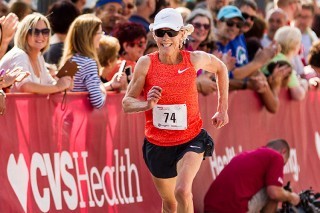
Joan Benoit Samuelson
What do elite runners do once they have have parted ways with their professional track career? After that last flag has been draped over their shoulders, after the very last olive wreath crown is placed on their heads, and the last Olympic medal or record is bestowed, what is it that they do? Where are they now?
Marla Runyan
Elite status: Two-time U.S. Olympian, with an eighth place finish in the 1,500 meters at the 2000 Olympics, national marathon champion, three-time national 5,000-meter champion, fourth at the 2002 New York City Marathon in 2:27:10, former American record holder in the indoor 5,000 meters, American record holder for the heptathlon 800 meters. And, for good measure, a high jump best of 5’11”. Oh and did I forget to mention she’s legally blind?
Retired status: Working as a teacher and ambassador at the Perkins School for the Blind in Massachusetts.
Rob de Castella
Elite Status: Rob de Castella first came to international attention when he won the 1981 Fukuoka Marathon in a time of 2:08:18, which was the fastest time recorded for an out-and-back course. He won the 1983 Rotterdam Marathon in 2:08:37, defeating a deep field that included the previously unbeaten Alberto Salazar and Carlos Lopes. Castella also represented Australia at the 1988 Seoul and 1992 Barcelona Olympics. He competed in four straight Olympic Games. Despite finishing in the top ten in three Olympics, Castella never won a medal.
Retired Status: The native Aussie now works with the Indigenous Marathon Project, a program that trains indigenous Australians or ‘aborigines’ for races around Australia in preparation for the New York City Marathon.
“You must have a training routine so that what you do happens automatically,” Castella told Runner’s Connect. “If I got up in the morning and thought about going for a run, there would often be a number of possible arguments against it. The thing is to get out and run. Later you can wonder whether you should have or not.”
Bart Yasso
Elite Status: Bart Yasso is one of the few people to have completed races on all seven continents from the Antarctica Marathon to the Mt. Kilimanjaro Marathon. He won the U.S. National Biathlon Long Course Championship in 1987. He has also completed an Ironman five times and the Badwater 135 through Death Valley. In addition to running, Yasso has cycled, unsupported and by himself, across the country twice.
He’s also the creator of the infamous Yasso 800 workout. If you don’t know what they are, learn about it here.
Retired status: Yasso currently makes his living as a writer and race ambassador. He travels all over the world coach and inspire runners into their first or 500th race.
Joan Benoit Samuelson
Elite Status: Joan Benoit Samuelson won gold at the 1984 Summer Olympics in Los Angeles. In doing so, she became the first-ever women’s Olympic marathon champion.
Retired Status: Samuelson is still an icon in women’s distance running. She is currently a consultant to Nike, and a published author of two running books. She also founded the TD Beach to Beacon 10K in Maine, which benefits a different children’s charity each year.
“Every time I fail, I assume I will be a stronger person for it,” said Benoit Samuelson in her biography. “I keep on running figuratively and literally, despite a limp that gets more noticeable with each passing season, because for me there has always been a place to go and a terrible urgency to get there.”
Few of us will probably ever achieve elite status. However one of the great things about running is that you don’t have to in order to give back.
RELATED: How Far Do Athletes Run In Different Sports
The post What Do Elite Runners Do When They Retire? appeared first on Competitor.com.
July 28, 2017
3 Exercises To Help You Achieve The Ideal Running Posture
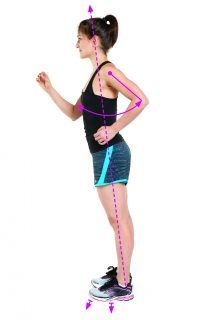
Excerpted from Run Better: How to Improve Your Running Technique and Prevent Injury by Jean-François Harvey, published by Greystone Books (March 2017). Condensed and reproduced with permission of the publisher.
Add these three exercises into your routine to right your posture wrongs.
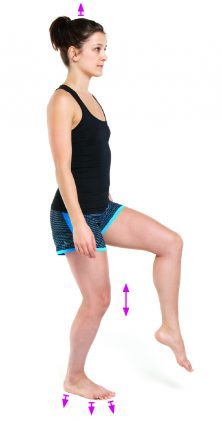
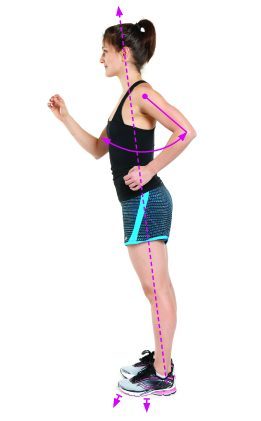
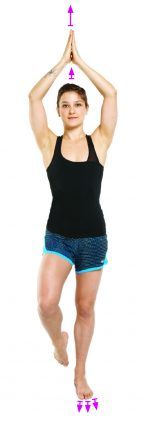
The post 3 Exercises To Help You Achieve The Ideal Running Posture appeared first on Competitor.com.
10 Meal Prep Tips That Set You Up For Dietary Success
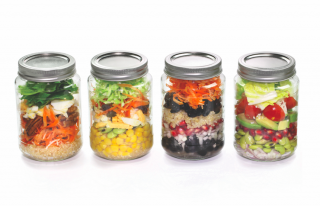
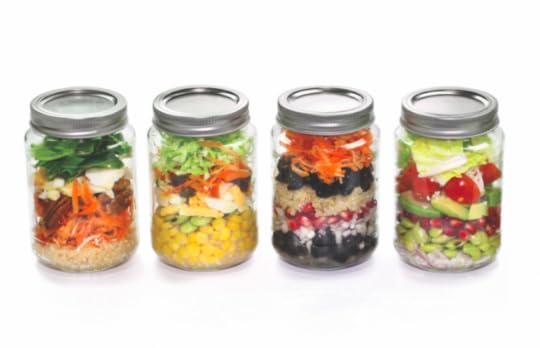
People who are obsessed with their mason jars, bento boxes and slow cookers are onto something. As a hungry runner, prepping meals and snacks ahead of time instead of working on a meal-by-meal basis is one of the best things you can do to set yourself up for dietary success. A task that almost guarantees you’ll eat better, stress less come mealtime and save a bunch of cash by eating out less. Here’s how to meal prep like a home-economics wiz.
1. Make a Date
Harried lives make it easy for meal prep to slide through the cracks. Instead of putting your batch cooking on the back burner for a Netflix binge, make sure to write down your kitchen appointment in advance and treat it like a one-on-one with the boss—not something to brush off . Try to set aside at least one hour each week that will be devoted to prepping meals and snacks to be enjoyed at a later date.
2. Browse Food Porn
Always prepping the same meals and snacks is a recipe for diet burnout. Who wants to eat chicken, brown rice and broccoli everyday? Hint: Nobody! For recipe inspiration, surf visual potluck sites like Tastespotting.com or Foodgawker.com, where you’ll find a feast for your eyes and plenty of ideas for nutritious, palate-pleasing dishes. From this, consider creating a recipe Pinterest board.
Related: Must-Have Items For Every Runner’s Fridge
3. Write It Down
Once you know what you want to rustle up in the kitchen, be sure to arm yourself with a detailed grocery list of the items you need, so you’re not eating into your prepping time by needlessly driving back to the grocery store for a crucial item. Try organizing your grocery list by aisle so that you don’t waste time back-tracking in the store. The more you walk, the more opportunity there is to fall prey to impulse buys.
4. Tap an App
Use apps like Paprika and Pepperplate that help make meal prepping a breeze. Functions include creating recipe databases, organizing daily menus and developing grocery lists as items you need run out.
5. Divide and Conquer
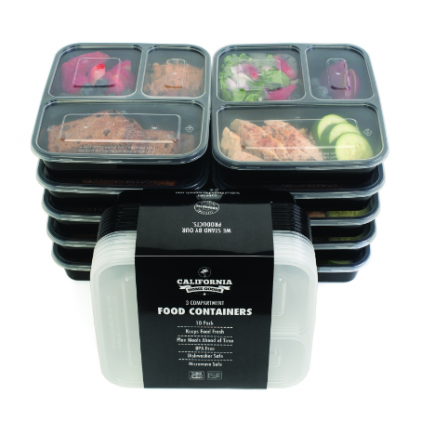
Successful meal preppers swear by having several identical pre-portioned meals doled out among reusable containers to stay well fed throughout the week. California Home Goods 3 Compartment Food Containers ($12.95 for a 10-pack) let you prepare big batches of items like whole grains, meats, dressings and chopped veggies in advance and then divvy them up among different compartments. Once full, the BPA-free microwave safe bento-style containers stack neatly in your fridge or freezer.
6. Subzero Heroes
Working on a recipe that calls for quinoa or steak? Make your life easier down the road by cooking extras. Beans, grains and meats (not fi sh) can be cooked in large amounts at once and then frozen for quick access in the future. Instead of making a giant meat sauce ice-cube that takes forever to defrost, divide your bounty among silicon muffin cups and freeze into more manageable portion sizes. Once frozen, unmold the food hockey puck and transfer to a zip-top bag.
7. Soak Your Oats
Who says you have to cook your cherished breakfast oats. Prepping hearty steel-cut oats by soaking the grains ahead of time softens their texture, so they are chewy enough to eat without stove time. For nearly a work week’s worth of morning meals, divide 1 1/3 cups steel-cut oats, 1 cup protein powder, 1/4 cup ground flaxseed and 1 teaspoon cinnamon among four wide-mouth jars or bowls. Add 1/3 cup boiled water to each jar, stir, top with nut butter and berries, cover and chill.
8. Get Stacked
Mason-jar meals are all over social media—and for good reason. Besides good looks, they are your solution to portable, instant meal satisfaction. Grab yourself some quart or two-quart jars (we like Ball’s) and get assembling. Dressings go in first, followed by sturdy items like cooked meats, grains, beans and carrots and then more delicate foods such as greens. (Read: no more soggy lunch spinach.)
Related: 3 Quick Nutrition Tips For Runners
9. One-Pot Wonders

Most chilies, curries and soups are ideal for making in big batches on a lazy Sunday afternoon to reap nutrition rewards throughout the week. When these dishes are chilled in the refrigerator, flavor compounds in the meats and aromatics like onions react with water, air and acids to be chemically transformed into new and improved tastes.
10. Think Small
If you only prep meals and not snacks, you could be setting yourself up for dietary meltdown as you give into break-room cookie temptation when a snack attack strikes. Once a week, divvy up healthy snack options like sliced apple and cheese, Greek yogurt and berries or nuts and dried fruit among single-serving containers to help you keep your distance from the vending machine.
BONUS: SMOOTH MOVE

Nothing hits the spot after a spirited workout like a frosty smoothie. But gathering up all the necessary ingredients when your gas tank is empty is no fun. These make-ahead subzero smoothie packs are your new post-run BFF.
• 2 cups blueberries
• 2 large banana, peeled and roughly chopped
• 4 cups baby spinach
• 1/3 cup fresh mint
• 1/4 cup hemp seeds (hemp hearts)
Divide everything among four zip-top freezer bags, seal shut and freeze until solid. When ready for a smoothie, blend together contents of one bag with milk, Greek yogurt and a couple dashes cinnamon.
The post 10 Meal Prep Tips That Set You Up For Dietary Success appeared first on Competitor.com.
July 27, 2017
Everything You Should Know About The Ideal Running Posture

Excerpted from Run Better: How to Improve Your Running Technique and Prevent Injury by Jean-François Harvey, published by Greystone Books (March 2017). Condensed and reproduced with permission of the publisher.
Running is an art that we can perfect through training. What’s more, just a few simple changes can make a huge difference over time.
Although the advances in exercise science can be applied to running, some people still believe that developing their running technique is pointless and could even increase their risk of injury. They think we all know how to run, that running is a natural activity we all did as children, so we shouldn’t have to do anything to improve our technique.
Related: How Runners Can Work On Landing Softly
Others are of the opinion that we are running the wrong way, and that it’s the fault of the so-called modern shoes we wear. In recent years, studies have in fact shown that foot strike can vary dramatically depending on the type of shoes we wear. With advocates calling for a return to a more “natural” way of running, minimalist shoes represent one solution to consider.
Every runner can run better. And do so with greater comfort, speed and control, while having more fun, saving energy and enjoying a more natural movement. This can all be possible mainly by improving one’s running technique. All runners have potential for fixes, whether in their running form, training or biomechanics.
What is the ideal running posture?
To have good posture is to have a body position that is centered spatially and balanced gravitationally. It can be achieved with minimal effort through control of the postural muscles. Having good posture changes your relationship to the environment around you and within your body. It is one of the essential foundations for every runner’s health and performance.
The ideal running posture is the one that promotes the most efficient movement and the most natural, flowing running style while respecting your body as much as possible. Don’t worry if your basic posture looks different from the ideal. You have your own posture, like a body signature. And there’s no reason to change everything overnight.
Related: The Ambition Effect—Setting A Goal Can Change Your Life
You can gradually work your way toward the ideal without needing to achieve perfection. There is more than just one good running posture, for the simple reason that human beings are not robots. According to the principles of posturology—the scientific study of posture—and the latest advances in biomechanics, we should be aiming to run tall with a slight forward lean.
When you improve your posture, you’re improving your ability to express yourself not only to the outside world but also within your body. The effects of better posture trickle down to everything you do. Postural exercises can promote a better lengthening of the spinal column by stimulating and strengthening the deep spinal muscles and all the muscles (quads, calves, glutes, etc.) that hold the body up against the force of gravity.
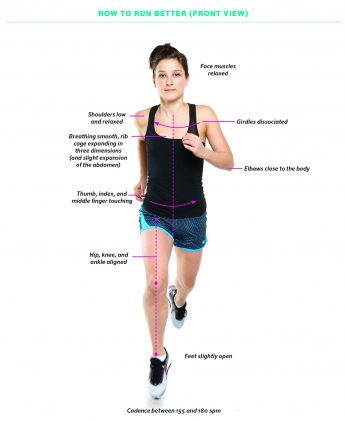
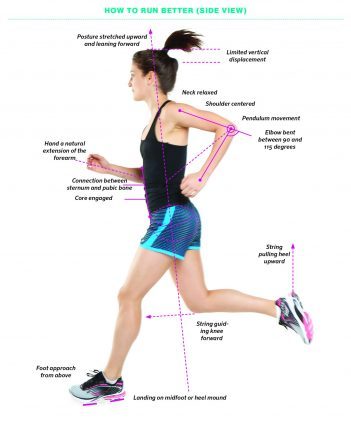
The post Everything You Should Know About The Ideal Running Posture appeared first on Competitor.com.
A First-Time Trail Runner’s Thoughts On The ASICS GEL-FujiRado
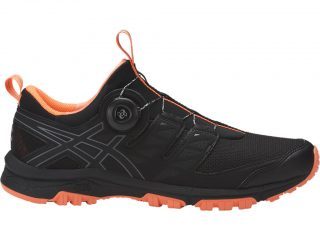
Disclaimer No. 1: I’m not a hardcore trail guy. If that’s an issue for you when reading a shoe review, I invite you to click away now with no hurt feelings.
But in some ways I think that makes me a better candidate to review the new ASICS GEL-FujiRado ($130), because I’m not married to one particular brand or style and have zero preconceived notions.
The FujiRado is a five-year collaboration between ASICS and BOA—the Denver based company known for its dial lacing system. After enjoying success in golf, snowboarding and cycling (among many other categories), this is BOA’s first push into the run space, a process that took half a decade of testing, retesting and then more testing. Additional pairings with ASICS, New Balance and Under Armor are expected in the coming months.
My run with the FujiRado was with the BOA folks at Red Rocks, about a half hour from their offices in Denver. We tackled the Matthews/Winters trail, a 6.9 mile loop that that takes you close to 6,800 feet. I did not complete the full 6.9 miles, which leads us to …
Disclaimer No. 2: I work, live and play at sea level in San Diego. So I’m not ashamed to admit that the Denver altitude crushed me at about a mile (and 8-percent incline) into the run. Rather than feeling like I was stuck in the smoker’s lounge at Denver International Airport for the next 90 minutes, I opted to pace myself with a run-walk combo. Which was fine because I wanted to enjoy my gorgeous surroundings and also get a sense for how the shoe performed at different speeds.
Even if I had trained at altitude for weeks leading up to this run, it’s unlikely I would have done the whole thing at full speed because I was told by seasoned trail runners who joined us that they found the loop surprisingly technical. That said, the shoe performed wonderfully. There were tight cuts, rocks to jump and accelerate off of and just enough zig-zag that ankle stability was put to the test.
The grip was outstanding thanks to ASICS’ mono-sock fit system. Not once did I feel my foot slip within the shoe. The padding is ample and the BOA lacing system easily withstood multiple knocks from rocks and debris. Plus, the dial is designed to detach rather than break, so you can just pop it back on if it becomes dislodged. The guarantee for the lifetime of the shoe is also a nice perk. You can feel that this collaboration was not a rushed process.
Here’s the downside. The gods cursed me with a wide foot. So if you’re like me, you’ve been substituting length for a wider toe box your whole life. You’ll have to do the same with the FujiRado, which has a slim fit en route to the tootsies. The end result was one blister.
Aside from that, I imagine this is a shoe that would equally satisfy the experienced trail runner and amateur runner/hiker. The BOA system doesn’t add much more weight (no more than wet laces) and the reassuring fit easily outweighs a few grams.
I started by saying I’m not a hardcore trail guy. I’m hoping with extra use the toe box will loosen up. Because these shoes make me want to be one.
RELATED: Summer 2017 Trail Running Shoe Review
The post A First-Time Trail Runner’s Thoughts On The ASICS GEL-FujiRado appeared first on Competitor.com.
Ryan Hall's Blog
- Ryan Hall's profile
- 21 followers



